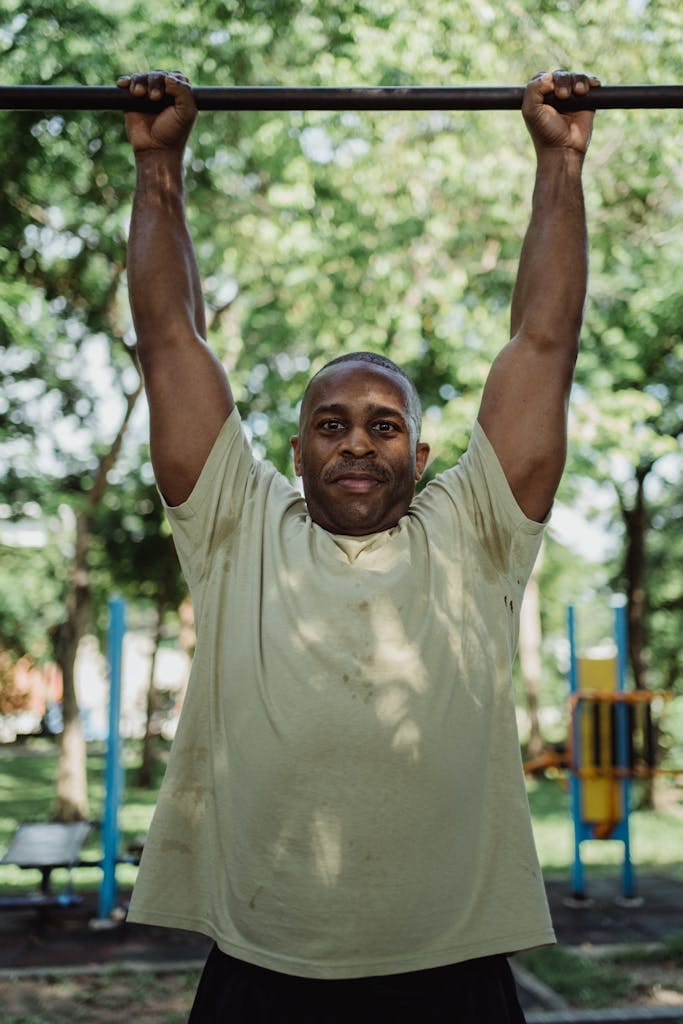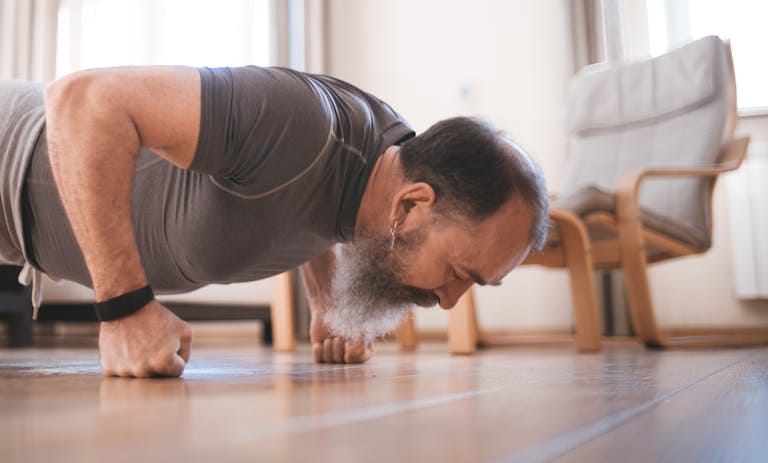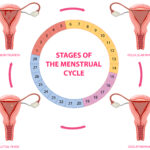FREE SHIPPING OVER $50
Men Over 45: Can You Pass These 5 Vital Strength & Longevity Tests?

Let’s face it, getting older comes with its own set of challenges. For men over 45, it’s easy to feel like your best physical days are behind you. Maybe you’ve noticed a bit less energy, a few more aches, or that tasks that used to be easy now feel a little harder. But here’s a powerful truth: aging doesn’t have to mean decline. It can, and should, mean getting smarter about your fitness and building strength that truly serves you in the real world, for years to come.
Many guys focus on gym numbers – how much they can bench or squat. Those are great for specific goals, but what about the kind of strength that helps you carry groceries without a groan, play with your grandkids without pulling a muscle, or simply maintain your independence and vitality into your later years? That’s where functional strength and longevity fitness come in.
We’ve put together 5 vital strength tests that every man over 45 should aim to pass. Let’s dive in.
Why Functional Strength Matters More After 45
As we age, our bodies naturally lose muscle mass and bone density, a process called sarcopenia and osteopenia. This can lead to decreased strength, poorer balance, and a higher risk of falls and injuries. Traditional gym exercises are good, but functional strength training focuses on movements that mimic everyday activities, making you stronger where it counts.
For men over 45, cultivating this type of strength is about:
- Injury Prevention: A strong, stable body is less prone to tweaks, strains, and serious injuries.
- Maintaining Independence: Being able to lift, carry, bend, and move freely as you age.
- Boosting Metabolism: More muscle mass means a higher metabolism, which helps with weight management and fat loss.
- Enhancing Quality of Life: Continuing to enjoy hobbies, sports, and time with family without physical limitations.
- Longevity: Research increasingly links functional strength and good physical capacity to a longer, healthier lifespan.
The 5 Vital Strength & Longevity Tests
Before you begin, remember to warm up your body with some light cardio and dynamic stretches for 5-10 minutes. Always listen to your body, and consult your doctor before starting any new fitness program, especially if you have existing health conditions.
Let’s see how you measure up!
1. The 1-Minute Push-Up Test (Max Reps)
This classic exercise is a fantastic measure of upper body strength and endurance, engaging your chest, shoulders, and triceps, as well as your core.
- The Test: Get into a standard push-up position (hands slightly wider than shoulder-width, body in a straight line from head to heels). Perform as many full-range push-ups as you can in 60 seconds, maintaining good form. If you need to, you can drop to your knees, but aim for a full range of motion.
- Why it’s Vital: It assesses your ability to push your own body weight, crucial for daily tasks like getting off the floor, pushing heavy objects, or protecting yourself in a fall. Good upper body strength also supports posture.
- What to Aim For (General Guidelines for Men Over 45):
- Excellent: 25+ reps
- Good: 15-24 reps
- Fair: 8-14 reps
- Needs Work: Less than 8 reps
- How to Improve: Practice push-ups regularly, starting on your knees if needed, or by performing incline push-ups against a wall or elevated surface. Gradually work towards full push-ups on your toes. Incorporate plank holds to build core strength.
2. The Plank Hold (Max Hold Time)
The plank is the ultimate test of core stability, an often-overlooked but absolutely crucial component of overall strength and injury prevention, especially for your back.
- The Test: Get into a forearm plank position (forearms on the ground, elbows directly under shoulders, body in a straight line from head to heels). Hold this position for as long as you can, maintaining a straight line without letting your hips sag or pike up. Stop when your form breaks.
- Why it’s Vital: A strong core supports your spine, improves balance, enhances performance in almost every physical activity, and reduces the risk of lower back pain – a common issue for men over 45.
- What to Aim For (General Guidelines for Men Over 45):
- Excellent: 90+ seconds
- Good: 60-89 seconds
- Fair: 30-59 seconds
- Needs Work: Less than 30 seconds
- How to Improve: Start with shorter holds and gradually increase time. Focus on engaging your abs, glutes, and quads to keep your body rigid. Practice different plank variations like high planks (on hands) or side planks to challenge your core from different angles.
3. The Single-Leg Balance Test (Eyes Open, Max Hold Time)
Balance is fundamental to longevity and preventing falls, which become a significant health concern as we age. This test assesses your stability and proprioception (your body’s awareness in space).
- The Test: Stand tall with your feet together. Lift one foot slightly off the ground, bending your knee slightly. Hold this position for as long as you can, eyes open, without letting your lifted foot touch the ground or your standing foot move. Repeat on the other leg. Take your best score for each leg.
- Why it’s Vital: Good balance reduces your risk of falls and related injuries (like hip fractures), which can severely impact quality of life later on. It also improves coordination for sports and daily activities.
- What to Aim For (General Guidelines for Men Over 45):
- Excellent: 30+ seconds per leg
- Good: 20-29 seconds per leg
- Fair: 10-19 seconds per leg
- Needs Work: Less than 10 seconds per leg
- How to Improve: Practice standing on one leg daily while doing simple tasks like brushing your teeth. Progress to standing on unstable surfaces (like a pillow) or trying the test with your eyes closed (with caution!). Incorporate exercises like lunges and single-leg Romanian deadlifts to build leg strength and stability.
4. The 1-Minute Wall Sit (Max Hold Time)
This simple test measures the strength and endurance of your quadriceps, hamstrings, and glutes – crucial muscles for walking, climbing stairs, and maintaining an active lifestyle.
- The Test: Stand with your back flat against a wall. Slide down until your knees are bent at a 90-degree angle, as if you’re sitting in an invisible chair. Ensure your thighs are parallel to the floor and your shins are perpendicular. Hold this position for as long as you can.
- Why it’s Vital: Strong leg muscles are fundamental for mobility, reducing joint strain, and preventing injury. This test directly relates to your ability to stand up from a seated position, climb hills, and endure prolonged standing.
- What to Aim For (General Guidelines for Men Over 45):
- Excellent: 90+ seconds
- Good: 60-89 seconds
- Fair: 30-59 seconds
- Needs Work: Less than 30 seconds
- How to Improve: Practice wall sits regularly, gradually increasing your hold time. Incorporate bodyweight squats and lunges into your routine to build overall leg strength and endurance.
5. The Sit-to-Stand Test (Max Reps in 30 Seconds, No Hands)
This is perhaps one of the most practical and telling tests of functional strength and longevity. It assesses your lower body strength, balance, and coordination – skills essential for everyday living.
- The Test: Place a sturdy chair against a wall. Sit on the chair with your feet flat on the floor, shoulder-width apart. Cross your arms over your chest. From a seated position, stand up completely without using your hands, then slowly sit back down. Perform as many repetitions as you can in 30 seconds.
- Why it’s Vital: This test directly measures your ability to move independently, get up from a seated position (or even the floor), and maintain mobility as you age. It’s a strong predictor of your physical capacity in later life.
- What to Aim For (General Guidelines for Men Over 45):
- Excellent: 18+ reps
- Good: 12-17 reps
- Fair: 8-11 reps
- Needs Work: Less than 8 reps
- How to Improve: Practice squats regularly, focusing on depth and control. Start by using your hands lightly if needed, then gradually reduce reliance. Incorporate lunges and step-ups to build more explosive leg strength.
Your Journey to Lifelong Vitality Starts Today
The question isn’t just “Can you pass these 5 vital strength tests?” It’s “Are you willing to commit to the journey of lifelong vitality?” For men over 45, understanding and acting on these strength benchmarks can truly transform your aging process. You have the power to defy the common narrative of decline and instead, move with purpose, strength, and confidence for decades to come.
Start today. Pick one test you want to improve, or simply commit to moving your body more consistently. Your future self will thank you for the investment you make in your health and longevity right now. Get stronger, live fuller, and age on your own terms.
Related Articles
- Is Your Workout HARMING You? 10 Science-Backed Ways Exercise Can Secretly Hurt Your Health
- Stop Dropping the Bar! The Ultimate Deadlift Grip Guide for Heavier Lifts
- The Pushup Test: Can You Out-Perform 90% of People Over 40?
- Sculpt Your Six-Pack at Home: Just 10 Minutes, Zero Equipment Needed!
- Get Boulder Shoulders: 4 Simple Exercises for Powerful, Defined Delts







